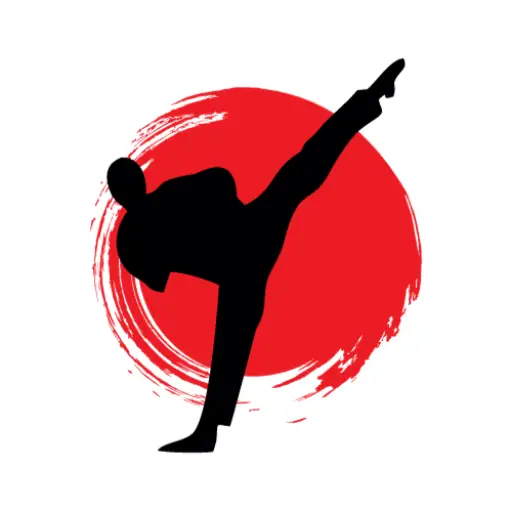Introduction to Australian Slang: A Unique Cultural Phenomenon
Welcome to the captivating world of Australian slang! Prepare to be enthralled as we delve into the unique cultural phenomenon that is Australian slang. Have you ever wondered how a country’s language can reflect its history, diversity, and vibrant spirit? Well, Australian slang does just that and more. It’s like taking a linguistic journey through time and experiencing the evolution of a nation’s identity.
Picture yourself transported back to Australia’s early days, where colorful characters roamed the wild lands. They brought with them their own distinct dialects, which mixed with Aboriginal languages and created a melting pot of linguistic creativity. This rich tapestry gave birth to some iconic Aussie expressions that continue to shape our conversations today.
From the jargon of convict settlements during the colonial era to modern influences from multiculturalism and pop culture, Australian slang has constantly evolved alongside society. It has become an integral part of how Australians communicate with each other, showcasing their laid-back nature and sense of humor.
So join us on this enthralling historical journey as we unravel the origins and influences behind Australian slang. From understanding its humble beginnings during the convict era to exploring its current usage in popular culture – there’s so much more than meets the eye when it comes to Aussie lingo!
Stay tuned for an exploration into iconic words and phrases that have made their way from Down Under into international lexicons. We’ll also shine a spotlight on how Australian slang plays a role in shaping popular culture and media worldwide.
But before we embark on this fascinating adventure together, let’s take a moment to appreciate the challenges faced in preserving this treasured aspect of our language. As times change, keeping Aussie slang alive requires dedication from individuals passionate about preserving our unique linguistic heritage.
So fasten your seat belts – or should I say “slang on”? Get ready for an enlightening exploration that celebrates not only words but also the spirit of Australia captured within them!
Please note: The following sections will provide a more detailed look into the various aspects of Australian slang, ensuring you leave with a comprehensive understanding of this captivating linguistic journey.
Early Origins of Australian Slang: Influences and Beginnings
The early origins of Australian slang are rooted in a fascinating blend of influences and beginnings that have shaped the unique lexicon we know today. As settlers from various backgrounds arrived on Australian shores, their languages and dialects intertwined, producing a linguistic melting pot unlike any other.
With the arrival of British convicts during the colonial era, Australian slang started to take shape. The isolated nature of convict settlements meant that language developed its own distinct flavor, incorporating elements from Cockney English, Irish accents, Aboriginal languages, and more.
As pioneers forged their way through the vast Australian landscape, they encountered new experiences and challenges which demanded innovative language to describe these realities. This resulted in colorful slang that reflected aspects of bush life – terms such as “bushwhacker,” “swagman,” and “billabong” became part of the everyday vernacular.
Furthermore, Australia’s multicultural society played a crucial role in shaping its slang. Waves of immigrants brought with them their own unique expressions and phrases from diverse corners of the world – Greek cafés contributed words like “chiko roll” while Italian migrants added flavorful terms like “spaghetti bolognese” to our culinary lexicon.
The gold rush era also left an indelible mark on Australian slang. As fortune seekers flocked to Victoria in search of gold in the mid-1800s, they brought with them an array of terms associated with mining activities – expressions like “bonanza,” “digging deep,” and even some Americanisms found their way into local lingo.
This captivating mix created a vibrant tapestry known as Australian slang – a treasure trove reflecting both historical influences and contemporary usage. It continues to evolve alongside modern society while maintaining its distinctive charm that sets it apart from other English dialects worldwide. Let’s dive deeper into this linguistic journey together!
Please note: The upcoming sections will further explore different aspects related to Australian slang’s evolution over time – so keep reading to uncover more fascinating insights.
The Convict Era and the Birth of Australian Vernacular
Step back in time to the captivating convict era, where the seeds of Australian vernacular were sown. This tumultuous period in history not only shaped the nation’s identity but also gave birth to a distinct language that would later become an iconic part of Australian culture.
As British convicts were transported to Australia, they brought with them a variety of regional accents and dialects from different parts of the United Kingdom. These diverse linguistic backgrounds mixed and melded together, forming a unique vernacular that arose from the blending of Cockney English, Irish brogues, Scottish intonations, and more.
Isolated from their motherland and living in harsh conditions filled with hard labor and uncertain futures, convicts developed their own slang as a means of survival and social bonding. This secret language allowed them to communicate with one another without being understood by their captors.
Terms like “bloke,” meaning a man or guy, “larrikin,” referring to someone mischievous or prone to pranks, and “shout,” commonly used for taking turns buying drinks at the pub – all emerged during this time. The rough-and-ready nature of convict life seeped into these colorful expressions.
Australian vernacular flourished further as settlements expanded across the continent. The harsh conditions demanded new words to describe unfamiliar landscapes such as deserts (“outback”), rivers (“creek”), and vast grassy plains (“the bush”). These terms became ingrained in daily life as pioneers navigated through untamed territories.
Through humor, resilience, hardship, and camaraderie among convicts themselves – an early version of Australian slang took root during this significant chapter in history. Today it stands tall as an enduring symbol of Australia’s colonial past while adding character and charm to contemporary conversations across the country.
Please note: We’re only scratching the surface here! In upcoming sections, we’ll explore how Australian slang has evolved beyond its convict origins and uncover the intriguing nuances of its usage in modern times. Stay tuned for more linguistic discoveries!
Australian Slang Today: Modern Influences and Current Usage
Step into the vibrant present and explore the fascinating landscape of Australian slang today. This modern era has brought forth new influences and challenges, shaping the evolution of this iconic linguistic phenomenon in ways both exciting and unexpected.
Australian slang continues to thrive as a reflection of the nation’s diverse cultural fabric. With waves of immigration from all corners of the globe, new languages, expressions, and colloquialisms have seamlessly integrated into Aussie parlance. Words like “barbie” (barbecue), “arvo” (afternoon), and “ta” (thank you) have become ingrained in everyday conversations across Australia.
Moreover, contemporary influences such as popular culture, media, and technology have greatly impacted Australian slang. Films featuring charismatic Aussie characters like Crocodile Dundee or television shows like “Kath & Kim” have propelled certain catchphrases and comedic expressions into public consciousness. Social media platforms provide a breeding ground for new slang terms to emerge – acronyms like LOL (laugh out loud), FOMO (fear of missing out), or even an affectionate nod to Australians’ love for food with #smashedavo.
While some may argue that globalization threatens local dialects, Australian slang stands resilient with its unique lexicon firmly intact. It remains a source of pride for Australians who cherish its ability to capture their laid-back nature, humorously express emotions or convey a strong sense of camaraderie among mates.
In this ever-changing landscape where language evolves at lightning speed thanks to viral trends and memes – Australian slang serves as a cultural touchstone that bridges generations while adapting to contemporary nuances.
So embrace the dynamic world where tradition meets innovation; where old favorites coexist with trendy expressions. Discover how Australian vernacular continues to captivate hearts around the world while retaining its distinctive charm right here on our linguistic journey.
Please note: As we venture further into this exploration of Australian slang’s influence on pop culture and society, we’ll uncover even more captivating insights. Keep reading to unveil the true tapestry of Aussie expressions!
Iconic Australian Slang Words and Phrases: From Down Under to the World
Explore the world of iconic Australian slang words and phrases as they make their lively journey from Down Under to captivate hearts worldwide. From endearing expressions to colorful colloquialisms, these linguistic gems have become beloved symbols of Australian culture and have even found their way into the lexicons of people across the globe.
One shining example is “g’day,” a classic Aussie greeting that succinctly captures the country’s laid-back nature and friendly spirit. It’s an instant identifier of Australian identity, transcending borders and making connections with people from all walks of life.
Let’s not forget about “mate,” a term bestowed upon friends and acquaintances alike, embodying camaraderie, loyalty, and trust. With its warm familiarity, it has become one of Australia’s most recognizable contributions to global slang.
Other iconic phrases like “she’ll be right” (meaning everything will turn out fine) or “fair dinkum” (to indicate something genuine or authentic) add an engaging charm to conversations while showcasing Aussies’ unique way of expressing themselves.
Thanks to popular culture, film industry exports like Crocodile Dundee have imprinted unforgettable lines such as “That’s not a knife” onto our collective consciousness. These delightful snippets serve as conversational icebreakers worldwide with references that instantly bring smiles to faces.
In the age of social media where trends can skyrocket overnight, even newer expressions like “no worries,” “sickie,” or calling someone a “bloody legend” have gained traction beyond Australia’s shores. The power behind these linguistic treasures lies in their ability to convey emotions with brevity while igniting curiosity about the fascinating language Down Under.
So embrace these quintessential Aussie phrases – whether you’re down in Melbourne or halfway across the globe – as they bridge cultures and create connections that transcend distance. Join us on this remarkable exploration into how Australian slang has permeated our everyday lives – one word at a time.
Please note: The upcoming sections will provide more fascinating insights into the role of Australian slang in popular culture and media, preserving its legacy, and celebrating the richness it brings to our conversations. Keep reading for even greater linguistic discoveries!
The Role of Australian Slang in Popular Culture and Media
Discover the influential role of Australian slang in shaping popular culture and leaving an indelible mark on various forms of media. This vibrant and distinctive linguistic phenomenon has become synonymous with the spirit of Australia, permeating films, music, television shows, and even advertising campaigns.
In film and television, Australian slang adds an authentic touch to characters and storylines set in the Land Down Under. Whether it’s the cheeky banter between Crocodile Dundee or the endearing larrikinism displayed by iconic Aussie TV characters like Kath & Kim – these expressions infuse humor into narratives while showcasing a unique cultural identity.
The music industry also embraces Australian slang as a way to connect with audiences on a deeper level. From anthems capturing stories of mateship to chart-topping hits peppered with colloquial phrases – these songs encapsulate not just catchy tunes but also an entire generation’s pride in their culture.
Commercials and advertising campaigns often use Australian slang as a way to resonate with consumers. Catchphrases like “no worries,” “she’ll be right,” or “how ya goin'” inject familiarity into marketing messages, fostering a sense of relatability that appeals to both Australians and international audiences alike.
Additionally, social media platforms have become breeding grounds for sharing amusing Aussie slang memes, videos, or witty one-liners – further propagating its influence within popular culture. Memorable hashtags incorporating Australian expressions create communities where people can bond over shared linguistic experiences.
Australian slang permeates every facet of popular culture and media. It has cemented itself as more than just words; it’s an embodiment of Australia’s colorful history, infectious personality, and sense of belonging. Through its usage across different mediums, whether deliberate or organic—Australian slang continues to leave its mark on global pop culture pathways.
Keep reading as we explore how challenges are faced when preserving this cherished aspect in our next section – ensuring that this rich tapestry of language endures for generations to come.
Challenges and Preservation Efforts: Keeping Australian Slang Alive
As Australian slang evolves with the changing times, challenges and efforts arise to ensure its preservation and continued usage in a rapidly shifting linguistic landscape. While this unique aspect of Australian culture remains resilient, there are factors that pose challenges and spark endeavors to keep it alive for future generations.
One challenge lies in the fast-paced nature of global communication and the influence of standardized English. With increased exposure to global media and a homogenization of language through mass media platforms, there is a risk that local dialects like Australian slang may lose their distinctiveness over time.
Another hurdle is the generational gap. Younger Australians may be more influenced by global trends or prefer digital modes of communication, resulting in a potential decline in using traditional forms of slang within their everyday conversations.
However, passionate linguists, researchers, educators, and communities are committed to preserving Australian slang’s richness. They recognize the importance of passing down this cultural heritage from one generation to another.
Preservation efforts range from documenting historical references to creating resources that foster understanding and appreciation for Australian slang. Language enthusiasts actively collect oral histories, compile dictionaries or glossaries specific to regional variations whilst exploring ways to integrate slang into educational curricula.
Social media also plays a significant role as an avenue where enthusiasts can share and celebrate Australian slang through dedicated groups or channels – ensuring its visibility amidst evolving communication patterns.
Efforts such as these not only contribute towards preserving Australia’s linguistic identity but also ignite conversations about social history, traditions, humor cultural nuances intertwined within these expressions.
By acknowledging the challenges faced while actively engaging in preservation initiatives – we play our part in passing down this vibrant linguistic tapestry that embodies the essence of Australia’s people & culture for generations today – keeping Aussie lingo alive!
Our journey concludes with a celebration – recognizing & embracing all that makes Australian slang an integral part – enriching conversations along Aussie shores & beyond!
Conclusion: Celebrating the Richness of Australian Slang
In conclusion, Australian slang stands as a testament to the country’s unique cultural heritage and vibrant linguistic landscape. This captivating lexicon has evolved from its early origins in the convict era to become a cherished part of Australia’s identity, resonating with people both within and beyond its borders.
From iconic expressions like “g’day” and “mate” to colloquial phrases that capture the nation’s humor and camaraderie, Australian slang adds an unmistakable charm to conversations. It reflects Australia’s diverse history, multicultural influences, and the resilience of its people.
Throughout this journey, we’ve explored the historical roots and influences that shaped Australian slang. We’ve witnessed how it continues to thrive in modern society with contributions from popular culture and social media platforms. We’ve discussed preservation efforts aimed at ensuring this treasured aspect endures for future generations.
So, let us celebrate the richness of Australian slang – a vibrant tapestry woven into everyday conversations Down Under. Its distinctiveness brings joy, connection, and a shared sense of identity while showcasing Australia’s one-of-a-kind spirit.
Join in on keeping Australian slang alive by embracing its usage in your own conversations or dive deeper into learning about its fascinating history through resources available online or engaging with passionate communities dedicated to preserving this linguistic gem.
Let us continue spreading Aussie charm through language – whether it be sharing an affectionate “no worries,” cracking up over a classic larrikin phrase or appreciating how these words encapsulate the heart and soul of Australia!
Thank you for accompanying us on this enlightening journey unraveling the evolution of Australian slang. Until next time – keep slanging!






